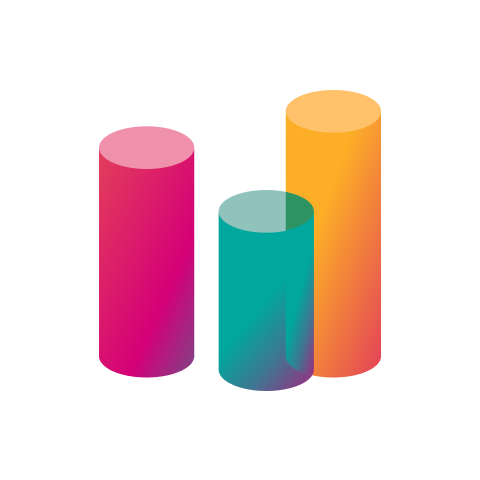
Stocks are divided into different groups on BSE depending on various factors, including market capitalisation, turnover, and corporate governance. By knowing which group the stock you’re investing in belongs to, you can get an idea of the kind of risks it may carry.
This article explores the various stock groups on BSE, what they signify, and what is the methodology used or criteria applied for determining which stocks belong to which category.
‘A’ Group Companies
‘A’ group companies are the most liquid companies traded on BSE. Only the top performing companies classified under groups ‘A’ and ‘B’ are considered for entry into group ‘A’. For a company to enter the list of BSE’s group ‘A’ stocks, it has to have been traded for a minimum of 98% of the trading days in the last quarter.
Furthermore, the Department of Surveillance and Supervision screens out companies with negative investigation observations.
The scoring mechanism to shortlist ‘A’ group shares is:
Average free-float market capitalisation of the last quarter (50%)
- Average turnover (BSE+NSE) of the last quarter (25%)
- Corporate governance (10%)
- Compliance monitoring (10%)
- Responsible investment (5%)
= Final score of a company
The score for responsible investment and corporate governance is determined using the latest annual report submitted by the company.
Also Read: Difference Between Stock Investing And Trading.
‘T’ Group Companies
Intraday trading is not permitted with ‘T’ group shares. Investors have to take delivery of these stocks. Trades in ‘T’ group companies are settled on a trade-to-trade basis as a surveillance measure. Other restrictions on ‘T’ group stocks include a 5% circuit limit.
The NSE counterpart of ‘T’ group companies is the BE series of stocks.
Companies in the ‘T’ group list of stocks have some protection against speculative trades and disruptive price movements.
‘X’ Group Companies
Companies falling in the X sub-group are traded only on BSE and not on NSE. At times, some companies falling in both the ‘X’ and ‘T’ groups might be referred to as ‘XT’ group companies. The suffix of ‘X’ signifies that these companies are traded only on BSE and not on NSE.
‘S’ Group Companies
Small and medium-sized companies come under the ‘S’ group on BSE. Such companies tend to be lesser-known companies, and their shares might not be as liquid as companies from the ‘A’ group or ‘B’ group. Due to the small size of these companies, there is a risk that they might not be able to weather crises in comparison to bigger companies.
Thus, due to low liquidity and low market capitalisation, ‘S’ group shares might be riskier than shares of bigger companies.
‘Z’ Group Companies
‘Z’ group shares are considered the riskiest companies that have committed one or a combination of the following errors:
- Failed to comply with listing requirements of BSE
- Failed to resolve investor complaints
- Did not make required arrangements with CDSL and NSDL for the dematerialisation of their securities
‘B’ Group Companies
Companies that do not fall under any of the abovementioned groups are placed in the ‘B’ group. As of September 2022, there are 1098 active securities (stocks and ETFs) present in the ‘B’ group. ‘B’ group companies are considered to have normal trading volumes and come under a normal rolling settlement system.
Which securities are in each group?
You can check out the various stocks in each stock group from the following link:
All you need to do is select ‘Equity’ from the ‘Segment’ dropdown list and select the group from the ‘Group’ dropdown list, and then hit ‘Submit’.
Final Thoughts
When you know the criteria applicable to different stock groups on BSE, the amount of effort you need to make to learn the key characteristics of a company is reduced. Instead of having to check whether a company’s shares are liquid and whether it has sound management, investors can take a shortcut by checking if the company belongs ‘A’ group and research further only if the answer is yes.
If you are interested in finding companies overlooked by investors focusing on stocks traded on just the NSE, you can start by taking a look at the list of companies in the ‘X’ group.
On WealthDesk, you can find WealthBaskets following various strategies, including investing in BSE’s hidden gems. A WealthBasket is a combination of stocks and ETFs built by SEBI-registered professionals.
FAQs
Group ‘A’ companies are considered to be the most liquid and best performers of all companies listed on BSE. Group ‘B’ stocks are stocks that do not fit into any other stock groups.
Sometimes, in the stock market, a grouping of securities is done, which can help investors to understand the key characteristics of the said securities. There are 23 groups on BSE. However, not all of them might apply to stocks. There are groups for government securities and fixed income securities of the debt market segment.
Shares belonging to the T2T group cannot be traded intraday or bought one day and sold on the next day. Investors have to take the delivery of T2T group stocks. If you try to sell T2T group stocks before they have completed the T+2 settlement, your order will be rejected. On BSE, group ‘T’ stocks are T2T stocks and on NSE, BE series of stocks are T2T stocks.
For a company to be placed in group ‘Z’
on BSE, it must have committed one or a combination
of the following errors:
– Failed to
comply with BSE’s listing requirements
–
Failed to resolve investor complaints
–
Failed to make required arrangements with CDSL and
NSDL for dematerialisation of their securities















